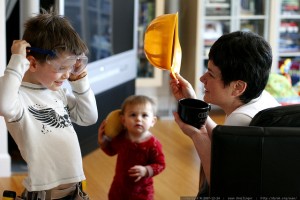Since many of us spend a great deal of time at work – on average, around 40 hours a week – it's important that we feel safe and secure in our surroundings.
Whether you clock in at an office, grocery store or construction site, there's a good chance you're surrounded by potential danger zones. Some may be pretty obvious, while others slip under the radar.
In fact, every year, hundreds of men and women or injured or killed on the job – even those deemed in great physical shape and good health.
Here are 5 of the top workplace & safety myth to familiarize yourself with so you can work without worry.

False! While listening and obeying an employer's rules and instructions are crucial to keeping your job, one shouldn't do anything that puts their health and safety at jeopardy. If you reasonably believe you are in serious and imminent danger, it's important to stop working and leave the potentially threatening area immediately. No job is worth risking your well being or your life.
If you're concerned you'll risk losing your job, don't let that fear prevent you from staying safe. The Labour Program of Human Resources and Skills Development Canada have administered the Canada Labour Code to protect your health and safety by preventing accidents and injuries on the job.
According to this code, a basic right for employees is to refuse work that they believe presents a danger to themselves or another employee.
False! If you think you're out of harm's way while on the job, think again. Here are some alarming statistics on workplace safety, courtesy of Employment and Social Development Canada:
Rather than become another statistic, it's important to make sure you're up to speed on health and safety at your workplace protocol – after all, it's what you don't know that can hurt you.
Nope! Your employers have the most responsibility when it comes to ensuring a safe and healthy workplace. They must keep a safe and well-maintained workplace, provide hazard information, proper safety equipment, training and competent supervision, have worker representation for health and safety and follow proper procedures in case of injury. However, your employer can only do so much to protect you from any potential safety hazards. Workers also play an integral role in their own personal safety. It is up to you to work safely and not take risks, report unsafe conditions, wear the proper safety equipment for the job and keep up-to-date with your employer about concerns regarding health and safety.
By working together with your employer both parties are in the best position to identify problems and develop solutions.
Think again! Working in an office environment can put stress on both the mind and the body. Working indoors, in a seated position all day, can lead to a whole host of injuries, including: back and neck pain, vision strains and pain in the hands and wrists.
There are also accidents and injuries that can occur from poor air ventilation and lighting – one could also easily trip over objects that are left out or hurt themselves from furniture that is in poor condition. According to the Centers for Diseases Control and Prevention, the most common accident linked to disabling workplace-related injuries is falls.
"Office workers are 2 to 2.5 times more likely to suffer a disabling injury form a fall than non-office workers," notes their website.
The CDC lists the following hazards that could be lurking in your office:
False! Young people in the workplace are particularly vulnerable to injuries on the job as many feel pressured and nervous to obey all commands from their supervisor – even the duties that put them in danger. This is especially true for those with limited or no other job experience, as well as those unfamiliar with potential safety hazards. Knowledge is power and protection for all ages.
And there you have it, five workplace safety myths debunked! By keeping up-to-speed on the facts, you're more likely to stay out of harm's way and help others avoid a potential accident.

Craig Yee is an Industrial Hygienist and Principal of OHS Global Risk Solutions. He earned his Masters Degree in Occupational and Environmental Hygiene at the University of British Columbia. He has over 12 years of direct experience in the hygiene, health and safety industry in both public and private sectors. You can connect with him on Google+.